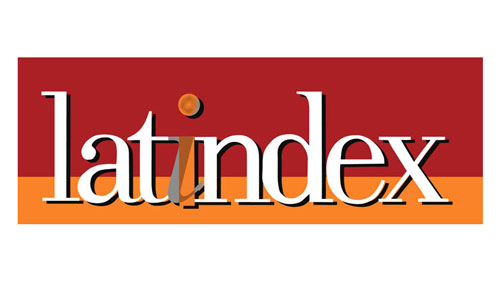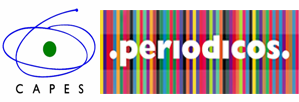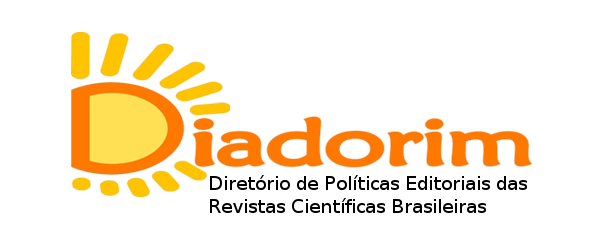El uso de herramientas digitales como videos y blogs para fomentar el aprendizaje de la lengua oral en ELE: un estudio de las percepciones de estudiantes principiantes
DOI :
https://doi.org/10.26512/rhla.v18i1.25062Mots-clés :
Lengua oral, pronunciación, herramientas digitales, videoRésumé
El aprendizaje de la lengua oral por estudiantes universitarios principiantes es un tema de vital importancia desde el punto de vista de la práctica oral, de la toma de conciencia de la pronunciación y del fomento de la confianza y de la autoestima. Sin embargo, la práctica oral no suele estar integrada en clase debido al gran número de estudiantes y a la carga de contenidos que deben cubrirse en muy pocas horas lectivas. En este artículo se presentan datos de un proyecto que tiene como objetivo explorar la inclusión de herramientas digitales para la práctica oral en cursos presenciales. Tras una breve revisión de diferentes estudios que se han realizado sobre este tema, se presentan datos de los participantes en nuestra investigación: 43 alumnos universitarios (Nivel A1), los cuales grabaron un video con información personal. Posteriormente los videos se colgaron en un blog donde los estudiantes dejaron sus comentarios. Después de la tarea, los participantes completaron un cuestionario anónimo sobre aspectos como: el uso de la tecnología, la utilidad de grabar un video y las ventajas del uso de herramientas digitales en el aprendizaje de la lengua oral y de la pronunciación. Los resultados obtenidos nos permiten presentar conclusiones, desde la percepción del alumno, sobre los aspectos y factores que intervienen en el aprendizaje de la lengua oral a través de herramientas digitales.
Téléchargements
Références
ABDOUS, M´Hammed; CAMARENA Margaret; FACER, Betty. MALL technology: Use of academic podcasting in the foreign language classroom. ReCall, v. 21, p. 76-95, 2009. Disponível em: <https://pdfs.semanticscholar.org/6e9d/7aeb862fefffd2406100ce1313bdcd3234f1.pdf>. Acesso em: 5 nov. 2019.
AGUSTÃN LLACH, Maria Pilar. La importancia de la lengua oral en la clase de ELE: estudio preliminar de las creencias de aprendices. Actas del XVII Congreso Internacional de la ASELE. 2006. Disponível em: <https://cvc.cervantes.es/ensenanza/biblioteca_ele/asele/pdf/17/17_0161.pdf>. Acesso em: 5 nov. 2019.
ALFONSO, Raul; GIRALT, Marta . Comunicación multimodal y aprendizaje de la lengua oral en E/LE. CAUCE. Revista Internacional de Filología, Comunicación y sus Didácticas, v. 36/37, p. 117-133, 2014. Disponível em: <https://cvc.cervantes.es/literatura/cauce/pdf/cauce36-37/cauce_36-37_007.pdf>. Acesso em: 5 nov. 2019.
BARALO, Marta. El desarrollo de la expresión oral en el aula de ELE. Carabela, 27, p. 5-36, 2000. Disponível em: <https://www.nebrija.com/revista-linguistica/files/articulosPDF/8.Baralo1.pdf>. Acesso em: 5 nov. 2019.
CABEDO NEBOT, Adrián. Actividades de articulación y de percepción auditiva: uso de herramientas informáticas. Foro de Profesores de E/LE, v. 8, 2012.
CANTERO, F.,J.. Adquisición de competencias fónicas, en Congosto, Y.; Salvador, A.; Montero Curiel, M.L. (Eds.). Fonética experimental. Educación Superior e Investigación. Colección Bibliotheca Philologica. Madrid, Editorial Arco/Libros, 2011. p. 29-55.
CAÑADILLAS, Fernando. Producción audiovisual en el aula de ELE: una propuesta didáctica. Memoria de Máster. Universidad de Oviedo. 2012. Disponível em: <http://digibuo.uniovi.es/dspace/bitstream/10651/3933/6/TFM_Fernando_Ca%C3%B1adillas_Ramallo.pdf>. Acesso em: 5 nov. 2019.
CASÁN, Juan Carlos. Didáctica de las grabaciones audiovisuales para desarrollar la comprensión oral en el aula de lenguas extranjeras. MarcoELE. Revista de Didáctica Español Lengua Extranjera, (9), 2009, p. 1-14. Disponível em: <https://www.redalyc.org/pdf/921/92152528015.pdf>. Acesso em: 5 nov. 2019.
CHACÓN, Carmen.; PÉREZ, Clevia. El podcast como innovación en la enseñanza del inglés como lengua extranjera. Pixel-Bit, Revista de Medios y Educación, (39), 2011. Disponível em: <https://recyt.fecyt.es/index.php/pixel/article/viewFile/61449/37462>. Acesso em: 5 nov. 2019.
CHUN, Dorothy. Teaching tone and intonation with microcomputers, CALICO Journal, 7, 1989. p. 21”“46. Disponível em: <http://www1.cs.columbia.edu/~sbenus/Research/L2_Intonation/Chun.pdf>. Acesso em: 5 nov. 2019.
FACER, B; ABDOUS, M.; CAMARENA, M.. The Impact of Academic Podcasting on Students: Learning Outcomes and Study Habits en De Cassia Veiga Marriott, R.; Lupion Torres, P. (Eds.) Handbook of Research on E-Learning Methodologies for Language Acquisition Acquisition. IRM Press: Cybertech Publishing. 2009. p. 339-351.
GIRALT, Marta. El cine como herramienta didáctica y su transversalidad en el aula ELE. Actas del XVIII Seminario de dificultades específicas de la enseñanza del español a lusohablantes, Consejería de Educación en Brasilia, XVIII, 135-158, 2011. Disponível em: <http://mural.maynoothuniversity.ie/6622/1/MG-herramienta-did%C3%A1ctica.pdf>. Acesso em: 5 nov. 2019.
HANNA, Barbara E.; GAO, Yang. Exploring optimal pronunciation teaching: Integrating instructional software into intermediate-level EFL classes in China. Calico journal, v. 33, n. 2, 201, 2016. DOI: 10.1558/cj.v33i2.26054
HARDISON, Debra. Generalization of computer-assisted prosody training: Quantitative and qualitative findings. Language Learning & Technology, v. 8, 2004, 34-52.
HINCKS, Rebecca. Speech technologies for pronunciation feedback and evaluation, ReCALL, v. 15, n. 1, p. 3-20, 2003. DOI: https://doi.org/10.1017/S0958344003000211
HSU, Hui-Yin; WANG, Shiang-Kwei; COMAC, Linda. Using audioblogs to assist English-language learning: An investigation into student perception. Computer Assisted Language Learning, v. 21, n. 2, p.181-198, 2008. DOI: 10.1080/09588220801943775
HUNG, Alan; HUANG, Danny. Video Blogging and English Presentation Performance: A pilot study. 1, 2. Psychological Reports, v. 117, n. 2, 2015. p. 614-630. DOI: 10.2466/11.PR0.117c20z6
LAKSFOSS, Ann. ¡Acción! El uso de materiales audiovisuales en el aula de ELE. Actas de ANPE II Congreso nacional: Multiculturalidad y norma policéntrica: Aplicaciones en el aula de ELE. 2008, p. 1-9. Disponível em: <http://www.educacionyfp.gob.es/dam/jcr:ebf8717f-0b5a-4eae-b9cc-fb2a03148a19/2009-esp-09-08laksfoss-pdf.pdf>. Acesso em: 5 nov. 2019.
LLISTERRI, Joaquim. La enseñanza de la pronunciación asistida por ordenador. En Actas del XXIV Congreso Internacional de AESLA. Aprendizaje de lenguas, uso del lenguaje y modelación cognitiva: perspectivas aplicadas. 2007, p. 91-120. Disponível em: <http://liceu.uab.cat/~joaquim/publicacions/Llisterri_06_Pronunciacion_Tecnologias.pdf>. Acesso em: 5 nov. 2019.
MOLHOLT, Garry. Computer-assisted instruction in pronunciation for Chinese speakers of American English, TESOL Quarterly, 22 (1), 1988, p. 91”“111.https://www.learntechlib.org/p/140045/>. Acesso em: 5 nov. 2019.
PASFIELD-NEOFITOU, Sarah. Online domains of language use: Second language learners’ experiences of virtual community and foreignness. Language Learning and Technology, v. 15, n. 2, p. 92”“108, 2011. Disponível em: <http://citeseerx.ist.psu.edu/viewdoc/download?doi=10.1.1.669.6702&rep=rep1&type=pdf>. Acesso em: 5 nov. 2019.
PI-HUA, Tsai. Bridging pedagogy and technology: User evaluation of pronunciation oriented CALL software. Australasian Journal of Educational Technology, v. 22, n. 3, p. 375-397, 2006. Disponível em: <https://doi.org/10.14742/ajet.1292>. Acesso em: 5 nov. 2019.
PINILLA, Raquel. El desarrollo de las estrategias de comunicación en los procesos de expresión oral: un recurso para los estudiantes de ELE, Carabela, v. 27, p. 53-68, 2000. Disponível em: <https://cvc.cervantes.es/ensenanza/biblioteca_ele/carabela/pdf/47/47_053.pdf>. Acesso em: 5 nov. 2019.
SONG, Jeong-Weon. An investigation into the effects of an oral English diary using a voice bulletin board on English spoken performance. Multimedia-Assisted Language Learning, v. 12, n. 1, p. 125-150, 2009.
SPALACCI, Mirelle. Enfoque oral digital para el aula de francés LE con fines profesionales. Phonica, p. 222-229, 2014. Disponível em: <http://revistes.ub.edu/index.php/phonica/article/view/10983>. Acesso em: 5 nov. 2019.
TOMÉ, Mario. Enseñanza y aprendizaje de la pronunciación de una lengua extranjera en al WEB 2.0. Revista de Lingüística y Lenguas Aplicadas, [S.l.], v. 5, p. 221-239, 2010. Disponível em: <http://dx.doi.org/10.4995/rlyla.2010.771>. Acesso em: 5 nov. 2019.
TORO, Juan. Enseñanza del español a través del cine hispano; marco teórico y ejemplo prácticos. MarcoELE. n. 8, p. 1-68, 2009. Disponível em: <https://marcoele.com/descargas/china/ji.toro_cinehispano.pdf>. Acesso em: 5 nov. 2019.
Téléchargements
Publié-e
Comment citer
Numéro
Rubrique
Licence
(c) Tous droits réservés Revista Horizontes de Linguistica Aplicada 2019

Cette œuvre est sous licence Creative Commons Attribution - Pas d'Utilisation Commerciale - Pas de Modification 4.0 International.

A Revista Horizontes de Linguística Aplicada de http://seer.bce.unb.br/index.php/horizontesla/index é licenciado sob uma Licença Creative Commons Atribuição-Uso não-comercial-Vedada a criação de obras derivadas 3.0 Unported.
- Autores mantém os direitos autorais e concedem à revista o direito de primeira publicação, sendo o trabalho simultaneamente licenciado sob a Creative Commons Attribution License o que permite o compartilhamento do trabalho com reconhecimento da autoria do trabalho e publicação inicial nesta revista.
- Autores têm autorização para assumir contratos adicionais separadamente, para distribuição não-exclusiva da versão do trabalho publicada nesta revista (ex.: publicar em repositório institucional ou como capítulo de livro), com reconhecimento de autoria e publicação inicial nesta revista.




